Monster Hunter 4 Ultimate Director Kaname Fujioka on the Challenges of Courting the West
The guiding hand behind Capcom's highly successful action-RPG series talks about why this latest sequel could be the one to finally hit it big outside of Japan.
This article first appeared on USgamer, a partner publication of VG247. Some content, such as this article, has been migrated to VG247 for posterity after USgamer's closure - but it has not been edited or further vetted by the VG247 team.
Monster Hunter has been one of the most dominant forces of Japanese gaming for the past decade, though it hasn't seen nearly the same success outside of its home country—not for lack of trying.
2015, though, could be the year Monster Hunter finally makes an impact in the West. The upcoming sequel, Monster Hunter 4 Ultimate, is receiving a major push by Nintendo with a limited edition New 3DS XL, and the game itself offers several new features to make it friendlier than ever to beginners. At the Nintendo event in San Francisco this past Wednesday, I had the chance to talk with Monster Hunter 4 Ultimate director Kaname Fujioka—who's been in the director's chair since its PlayStation 2 origins—about his history with the series, and the challenges of successfully winning over new players while still meeting the demands of Monster Hunter veterans.
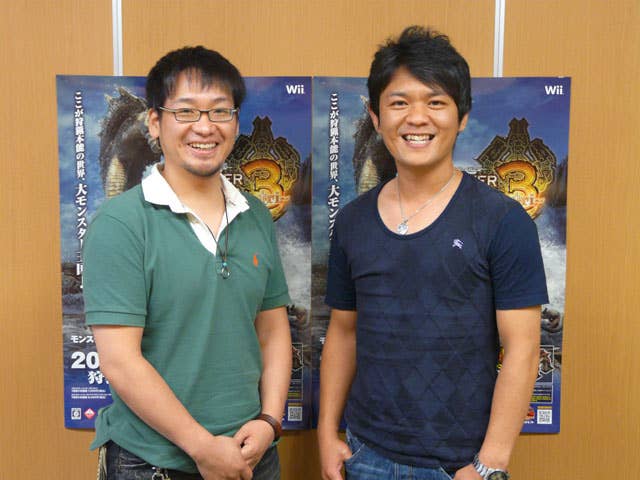
USgamer: Monster Hunter has a huge presence in Japan, but it hasn't been nearly as fortunate in America. What are the challenges of reaching a non-Japanese audience?
Kaname Fujioka: The thing that's always sold Monster Hunter is the fact that you play with other people. In Japan, the geography of the region—the fact that it's a smaller, denser country—has made the local play really catch on. People, getting together physically and playing the game with a focus on one particular goal: helping each other out. In the West, it's a completely different environment. It's a lot harder for people to actually get together and play the game. With our focus on implementing really good, robust online play in this title, we're hoping that's going to help lower the barrier of entry for people... Whether you're in Japan or in the West, the fact of the matter is playing with other people is a ton of fun.
USg: How do you strike a balance between introducing new players to the world of Monster Hunter while giving returning players what they want?
KF: That balance is something we feel is really important. When we're making a new mainline title, we make sure that it's going to be something where people that've played the games before are going to find new depth in the game that wasn't there in previous titles. They're going to have new, fresh experiences that they can enjoy on the new title. But, on the other hand, we want to make sure people new to the series aren't going to start the game and go, "Okay, I don't know what the heck is going on." That being the case—especially with this title—we were really careful about creating the story in the single-player experience to be a good tutorial for people to understand what they need to do to get into Monster Hunter.
The other thing is, we've set up the lobbies in different ways so that the experienced players can get together with novice players and teach them. So the experienced players can say, "Alright, we're going to fight this monster, so be ready to do this..." That kind of thing. And guide the novice players so they can grow into being their own experts.
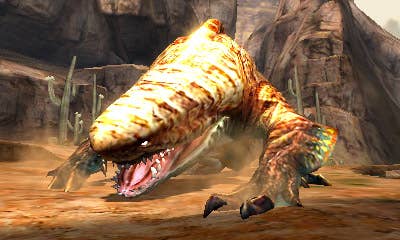
USg: With a long-running series like Monster Hunter, fans can be really resistant to change and hard to please. Can you talk about any ideas from previous Monster Hunters you and your team liked, but players were resistant to?
KF: It's not the case that we'll have made changes and experienced players will say, "Actually, this didn't work out." And then we say, "Oh, this didn't work out, so we're going to change things back." [Instead], we see what works and what people like in different titles, and we try to expand on that. For instance, in Monster Hunter 3, we had these underwater battles. Our goal for that was to give players a chance to fight a monster from 360 degrees.
In 4, we looked at [underwater battles] and said, "That idea is great, but we think we can do better. We think we can implement that in a way that's going to be even better, more natural." That's where the verticality came about. With the verticality, that's something you can do in every environment—not specifically underwater environments. With the way the verticality is implemented, it's much more natural. You just press towards a barrier and your player naturally climbs over it. You run towards an edge and your player naturally jumps off so you can attack a monster. We try to figure out what was good, and how to make it even better.
USg: It seems portable systems will remain the future platform for Monster Hunter, even though the series debuted as a console game. What are your thoughts on the future of Monster Hunter on consoles?
KF: So, for this title in particular, we focused on producing one SKU so everyone could play together. The 3DS was basically the best bet because, that way, you can play online or take your 3DS with you and play locally. You're not chained to one TV or anything like that. For what we wanted to do with this game—basically, let people play together however they want—[portable] was really the best choice.

USg: You clearly listen to the fans a lot in terms of the changes you make. What channels do you go through to get this feedback, and how much does the West and their reactions account into the development of the next Monster Hunter?
KF: This doesn't just go for the West, but Japan as well: The dev guys are always looking on the Internet for comments on how people feel about the games. So we do go on the Internet for that kind of stuff. But also, we're very proactive about setting up events where we get to directly interact with the Monster Hunter community itself.So we can go and actually talk to players and say, "How'd you feel about it?"
USg: How do you decide which monsters will return from old games, and how does your process work for creating new ones?
KF: As far as bringing older monsters to new titles, one way to go about it is just to look at the monsters and say, "Look, this monster is really popular with everybody, so we should put that in there." The other thing is, especially with this title, the terrain changed—now we have this verticality with the terrain. So, we looked at that and said, "Looking at the old monsters, which ones would have their possibilities expand by introducing this new verticality element to their abilities and movement?"
[In terms of new monsters], there's really all kinds of different approaches that we take, but I'll give you two examples. So the first one is concerning Gore Magala. This is the flagship monster for this title, and we knew that, for this title, we wanted to put more of a focus on story. So, the way most Monster Hunter games flow is that you play as a hunter, and as you grow stronger, you interact with this flagship monster and find out what the real deal is with it. And so, this title is also like that with the Gore Magala, but for Gore Magala, we wanted to introduce an element in the story where he's shrouded in mystery. We wanted him to be very mysterious. If you take a look at him in the game, his design reflects that: His wings are based on the idea of a mysterious caped villain. In that sense, his visual design was very much influenced by the fact that the story needs to reflect these different aspects.
We also have the Kecha Wacha, for instance who's this kind of monkey-type monster. Kecha Wacha isn't a particularly strong monster himself, but he serves a purpose: He's put near the beginning of the game to teach players how to interact and play with the verticality. By himself, he's not very strong, but he also utilizes the verticality—he climbs around and does all this different stuff. And if you haven't played Monster Hunter 4 Ultimate before, you naturally learn as you're playing against him how to use the verticality as well.
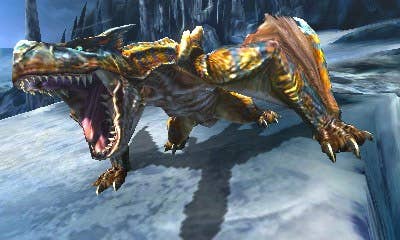
USg: Some elements of Monster Hunter are especially rooted in its PlayStation 2 and PSP beginnings—the segmented area maps, in particular, seem to have been implemented to accommodate for certain technological shortcomings. Do you have a grand vision of Monster Hunter one day having an open, contiguous world for players to hunt in, or is the segmentation of Monster Hunter's environments part of the series' DNA?
KF: One thing we have to be careful about is not changing what makes Monster Hunter Monster Hunter. We want people to be able to experience and enjoy what makes Monster Hunter good. And, at least as far as the current situation goes, the game play in Monster Hunter very much is based on this idea of having segmented areas you manage fighting against the monsters in. Changing that right now is something that wouldn't quite work. Obviously, even if you are going to move between areas, it's best not to have to worry about having a load time, so that's something we have to keep in mind. Furthermore, as far as what the future holds, who knows?
For instance, part of the reason this segmented map is important is that's it's very much part of the game play. Let's say you're fighting against a monster in a particular area and you're almost dead. If you can make it to the exit of that area, you can get out of there and at least heal yourself while the monster's in another area. There's a reward for players who can successfully take this risk. That's very much ingrained in the base of the game play right now. So, the reason we haven't changed that yet is because—if we are going to change something like that—that gets down to the very roots of the game. If we're going to change Monster Hunter so that it basically features one giant, contiguous area, then we have to really reformulate and rethink everything so it works correctly.

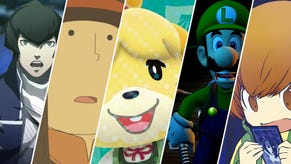
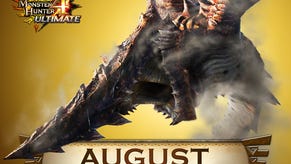
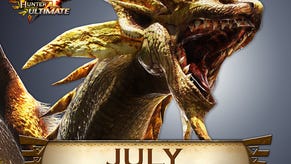



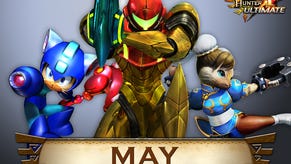
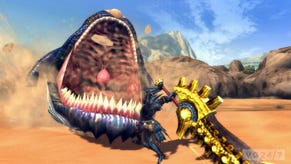



_ddwYK80.png?width=291&height=164&fit=crop&quality=80&format=jpg&auto=webp)



